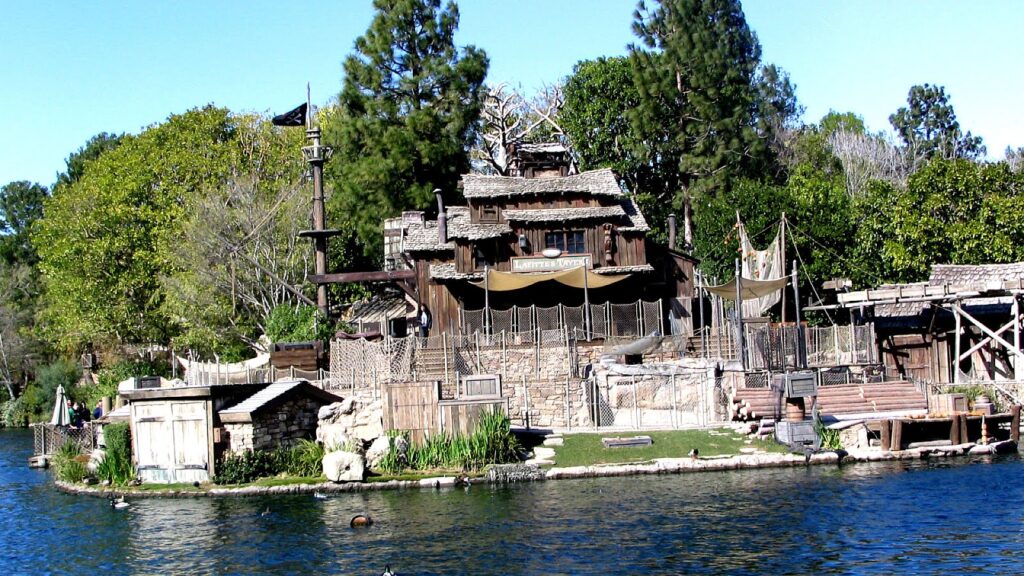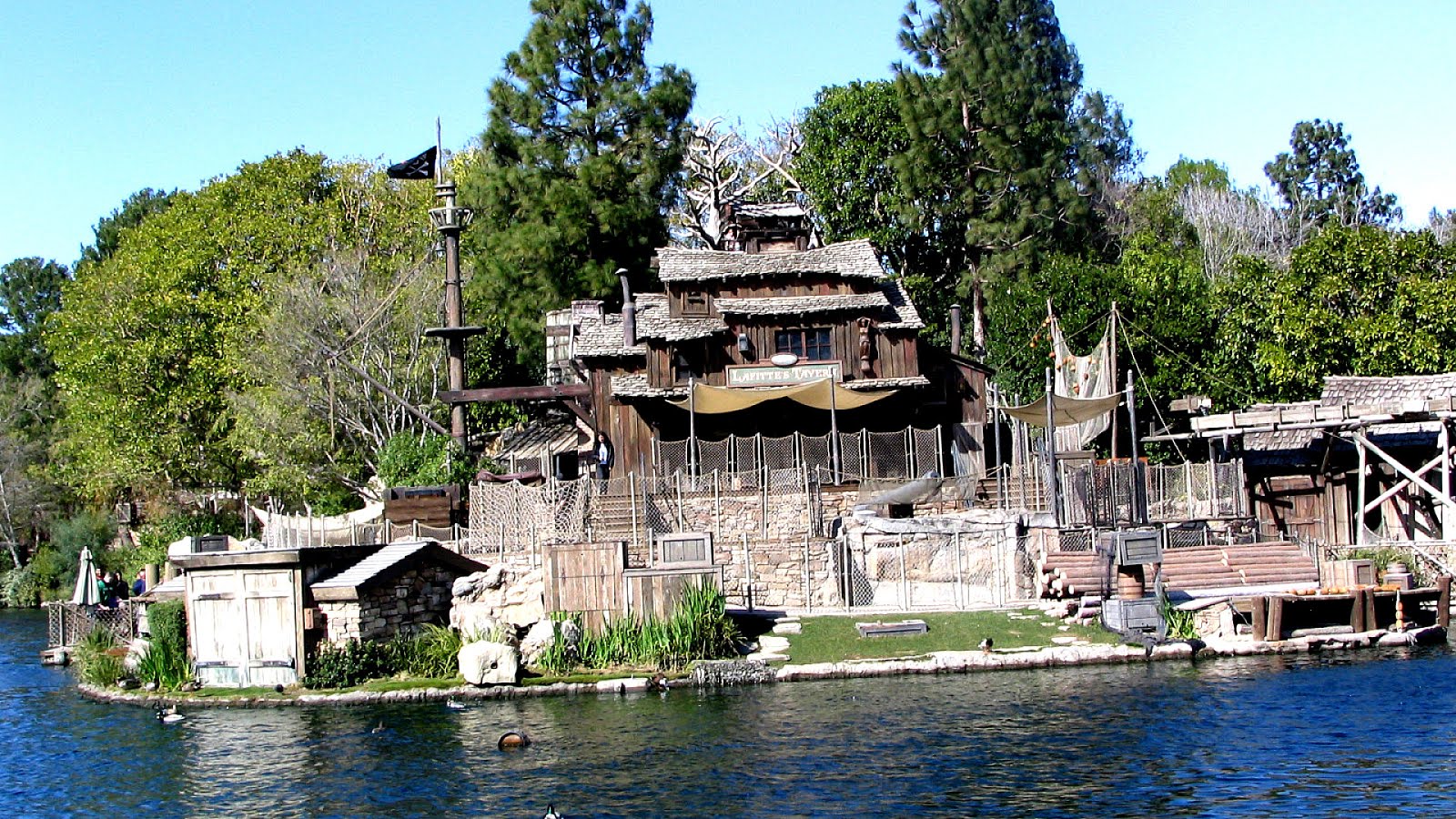
Rediscovering Discovery Island: A Bay Lake Gem’s Past, Present, and Future
Discovery Island, situated in Bay Lake, Florida, holds a unique place in the history of Walt Disney World. Before the arrival of Pandora – The World of Avatar and the global phenomenon it represents, there was a different kind of immersive experience waiting to be discovered on this small island. This article delves into the fascinating past, explores its current state, and speculates on the possible future of Discovery Island in Bay Lake.
A Brief History of Discovery Island
Originally known as Riles Island, named after its former owner, the island was acquired by Disney in the 1960s. It initially opened in 1965 as Treasure Island, a pirate-themed attraction, before being rebranded as Discovery Island in 1974. This iteration focused on showcasing the natural world, particularly birds and other wildlife. It quickly became a beloved, albeit lesser-known, part of the Walt Disney World experience. For over two decades, families explored its winding paths, marveling at the diverse flora and fauna. The island offered a tranquil escape from the bustling theme parks, providing a unique educational and recreational opportunity.
The primary attraction of Discovery Island was its collection of exotic birds. Flamingos, macaws, toucans, and various other species called the island home. These birds were not simply caged; they were often allowed to roam freely, creating a truly immersive environment. Guests could observe these magnificent creatures up close, learning about their habitats, behaviors, and conservation status. Beyond the birds, Discovery Island also housed a variety of other animals, including alligators, tortoises, and lemurs. These animals added to the island’s diverse ecosystem and provided guests with even more opportunities for discovery and education.
Educational programs were a cornerstone of the Discovery Island experience. Cast members, often trained zoologists or naturalists, were stationed throughout the island to answer questions and provide insights into the animals and plants. Guided tours were also available, offering a more in-depth exploration of the island’s ecosystem. These programs were designed to be both entertaining and educational, fostering a greater appreciation for the natural world. For many visitors, Discovery Island was not just a theme park attraction; it was a valuable learning experience.
The Closure and Abandonment of Discovery Island
In 1999, Disney announced the closure of Discovery Island, citing the opening of Disney’s Animal Kingdom as the primary reason. Animal Kingdom, with its vast array of animals and immersive environments, effectively superseded Discovery Island’s offerings. On April 8, 1999, Discovery Island closed its doors to the public, marking the end of an era. The animals were relocated to Animal Kingdom and other facilities, and the island was left abandoned. While the official reason was the opening of Animal Kingdom, some speculate that concerns about environmental regulations and the cost of maintaining the island’s ecosystem may have also played a role.
The abandonment of Discovery Island has led to its gradual decay. Buildings have deteriorated, vegetation has overgrown, and the once-pristine environment has begun to revert to its natural state. Urban explorers have ventured onto the island, documenting its eerie beauty and sharing their findings online. These explorations have revealed glimpses of the island’s past, including remnants of animal enclosures, signage, and other artifacts. The images and videos captured by these explorers offer a fascinating, albeit melancholic, look at a once-thriving attraction.
The story of Discovery Island’s abandonment is a cautionary tale about the impermanence of theme park attractions. While Disney is known for its innovation and constant evolution, the closure of Discovery Island serves as a reminder that even the most beloved attractions can eventually be replaced. The island’s current state is a stark contrast to its former glory, highlighting the impact of human abandonment on the natural world. The slow reclamation of the island by nature is both fascinating and unsettling, raising questions about the long-term fate of this once-cherished destination.
The Current State of Discovery Island in Bay Lake
Today, Discovery Island remains off-limits to the public. It sits silently in Bay Lake, a haunting reminder of its former life. The buildings are decaying, the paths are overgrown, and the animals are long gone. Despite its abandonment, the island continues to attract attention, primarily from urban explorers and Disney enthusiasts. These individuals are drawn to the island’s mystique, eager to uncover its secrets and document its current state. They share their findings online, keeping the memory of Discovery Island alive.
The ecosystem of Discovery Island has undergone significant changes since its abandonment. Without human intervention, the island’s flora and fauna have returned to a more natural state. Invasive species have taken hold, and the native vegetation has struggled to compete. The island’s wildlife population has also shifted, with some species thriving and others disappearing. The long-term ecological impact of the island’s abandonment is still being studied, but it is clear that the island’s ecosystem is undergoing a significant transformation.
Disney has maintained a policy of restricting access to Discovery Island, primarily due to safety concerns. The decaying buildings and overgrown vegetation pose significant hazards, making it unsafe for unauthorized visitors. Security patrols are conducted to prevent trespassing, and the island is monitored remotely. While Disney has occasionally used the island for training exercises or research purposes, it remains largely untouched. The company’s decision to restrict access has helped to preserve the island’s integrity, preventing further damage and ensuring the safety of the public.
The Future of Discovery Island
The future of Discovery Island is uncertain. While there have been rumors of potential redevelopment, Disney has not announced any concrete plans for the island. Several possibilities exist, ranging from complete demolition and redevelopment to a more limited restoration and preservation effort. The ultimate decision will likely depend on a variety of factors, including cost, environmental concerns, and market demand.
One potential scenario is the complete redevelopment of Discovery Island. Disney could choose to demolish the existing structures and build a new attraction on the island. This could involve creating a new theme park area, a resort hotel, or some other type of entertainment venue. However, this option would likely be costly and would require significant environmental remediation. Given the current economic climate and Disney’s focus on existing parks, this scenario seems less likely in the near future.
Another possibility is a more limited restoration and preservation effort. Disney could choose to stabilize the existing structures and create a limited-access attraction that showcases the island’s history and natural beauty. This could involve guided tours, educational programs, and limited wildlife viewing opportunities. This option would be less costly than complete redevelopment and would allow Disney to preserve a piece of its history. However, it would also require ongoing maintenance and security, which could be a significant expense.
A third possibility is that Disney will simply leave Discovery Island abandoned indefinitely. This would be the least costly option, but it would also allow the island to continue to decay. Over time, the buildings would deteriorate further, the vegetation would become more overgrown, and the island would become even more difficult to access. While this option may seem undesirable, it is a realistic possibility given Disney’s current priorities. [See also: Disney’s Abandoned River Country: A Forgotten Water Park]
Ultimately, the future of Discovery Island remains uncertain. However, its past and present offer valuable insights into the evolution of Walt Disney World and the challenges of balancing entertainment with environmental stewardship. Whether it is redeveloped, restored, or left to decay, Discovery Island will continue to fascinate and intrigue for years to come. The island’s story serves as a reminder that even the most magical places can eventually fade away, leaving behind only memories and whispers of what once was. The allure of Discovery Island and Bay Lake continues to captivate those who remember its former glory, even as nature reclaims its territory.
The mystery surrounding Discovery Island in Bay Lake only adds to its appeal. The island, once a vibrant ecosystem teeming with exotic birds and lush vegetation, now stands as a silent testament to a bygone era. Its story is a blend of Disney’s ambition, environmental considerations, and the inevitable march of time. The rediscovery of Discovery Island, even if only through photographs and stories, allows us to reflect on the ever-changing landscape of entertainment and the enduring power of nature. The future of Discovery Island remains unwritten, but its past will always be a part of the Walt Disney World narrative. The history of Discovery Island is intricately linked to Bay Lake, shaping its identity and adding to its unique character. The island’s fate is a constant topic of discussion among Disney enthusiasts, who eagerly await any news or developments regarding its future.
The legacy of Discovery Island extends beyond its physical presence in Bay Lake. It represents a time when Disney’s focus was not solely on thrill rides and blockbuster attractions, but also on education and conservation. The island served as a living classroom, where guests could learn about the wonders of the natural world and develop a greater appreciation for the environment. This educational aspect of Discovery Island is often overlooked, but it was an integral part of the island’s appeal. The island’s closure marked a shift in Disney’s priorities, as the company increasingly focused on creating more immersive and technologically advanced experiences. While Animal Kingdom has undoubtedly surpassed Discovery Island in terms of scale and scope, the island’s legacy as an educational and conservation-focused attraction remains intact. The story of Discovery Island continues to resonate with those who remember its unique charm and educational value. The island’s impact on Bay Lake and the surrounding ecosystem is still being felt today, as nature reclaims the land and the island’s past slowly fades away.
Even in its abandoned state, Discovery Island continues to spark curiosity and imagination. The island’s decaying structures and overgrown vegetation create a sense of mystery and intrigue, drawing urban explorers and Disney enthusiasts alike. These individuals are driven by a desire to uncover the island’s secrets and document its current state, sharing their findings online and keeping the island’s memory alive. The images and videos captured by these explorers offer a glimpse into a forgotten world, a world where nature and human ambition collided. The rediscovery of Discovery Island is an ongoing process, as new information and perspectives emerge. The island’s story is a reminder that even in the most meticulously planned and controlled environments, nature will always find a way to reclaim its territory. The future of Discovery Island remains uncertain, but its past will continue to inspire and intrigue for generations to come. The island’s connection to Bay Lake is undeniable, and its fate will undoubtedly have a lasting impact on the lake’s ecosystem and the surrounding area.

